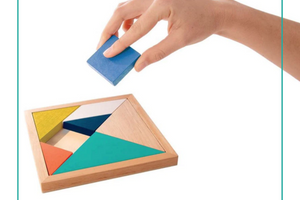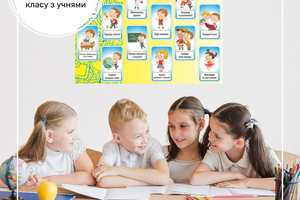Those who read books know the joy of seclusion in a cozy place with a book and being immersed in other people's worlds, or the joy of having a selection of fascinating reading material that they can browse to their heart's content.
The love of reading is best established in childhood. Knowing and wanting to read is not only necessary or useful, but can be a place of rest, comfort, a source of knowledge and much more.
In this article, you will learn how you can inspire and encourage your children by creating a reading oasis, and how they will become true book lovers.
Content
1. You can learn to love reading
2. How to design a reading corner
2.1. Cozy furniture for a reading corner
2.2. A variety of choices for beginners
3. Creation of a school library
4. A little encouragement for those who don't like to read
5 Appetite for more: book presentation and reading aloud
You can learn to love reading
No master has yet fallen from the sky: few students will learn to read quickly and easily. So it is not surprising that many children do not like reading at first, because they find it tiring.
For various reasons, many children do not have books at home, nor enough peace, time or comfort to read. Perhaps the parents themselves do not read, perhaps there is not enough interest, time or money to introduce children to this pleasure, or perhaps the child has completely different problems and responsibilities at home.
It is all the more important that these children still have the opportunity to discover reading: without pressure, according to their own taste and at their own pace. A library, even a digital one in the form of a reading program, or a reading corner at school offers optimal conditions for this - through a wide selection of books, a cozy atmosphere and shared reading. Because you can learn to love reading.
How to create a reading corner
"A room without books is the same as a body without a soul," said Mark Cicero. In any case, books are an integral part of everyday school life, but with a reading corner, of course, it is important that children's enjoyment is a priority and that they are not forced to read.
Therefore, the reading corner should be a place where children like to spend time - a small oasis of peace in the midst of the busy pace of everyday life, where they can comfortably and fully immerse themselves in the wonderful and wonderful worlds. Lighting also plays an important role; Of course, it should be bright enough to read easily, but you should avoid too bright or cold light.
Cozy furniture for a reading corner
First of all, they should be convenient: Use shelves, (sliding) cabinets or screens to enclose part of the classroom. This means that little budding book lovers feel unobserved, have more peace of mind and can focus more easily.
Depending on the space, there can be different reading furniture: from a comfortable soundproof sofa to bean bag chairs or rugs to separate elements from which you can create a seating island of your choice (always new).
A variety of choices for beginners
Of course, there should be no shortage of reading materials: set up a bookshelf with different copies so that each child gets his books. Someone who (so far) doesn't read well or likes to read can easily be put off by a thicker book.
There are probably children in your class who can recommend their favorite books or are even ready to give them to read for a year. Of course, you can also announce the book donation among your friends, relatives or colleagues, or ask the children's parents for help. It might also be worth checking with the library, as older collections are often given away for reasonable prices in favor of current copies or, if you're lucky, even donated. In addition, many city libraries have special offers for schools and classes, e.g. tours or activities related to research and reading aloud - and you can temporarily replenish your reading corner with a book box taken from there.
Magazines should also be in every reading corner, especially since many children find them much more attractive than a book without pictures. As always, variety is key: kid-friendly knowledge magazines invite you to browse, wonder and learn - and maybe at some point create a poster or collage when there's enough new material to read.
Creating a school library
"The real university of our time is a collection of books." This is perhaps one of the most intelligent sentences of the historian Thomas Carlyle, whose other opinions, unfortunately, were often characterized by racism and contempt for humanity.
So, does your school have a room that's long overdue or rarely used? Then maybe it's time to take on the project with your colleagues and maybe your parents. Although it is a lot more work than designing a reading corner, your effort will be worth it for many generations of students.
In principle, the same criteria apply to the design of the school library as to the reading corner, only a little more. At the same time, students should of course also be able to take lessons there, study relevant literature on various topics and perhaps even borrow books.
A little encouragement for those who don't like to read
When the reading corner or library is ready, you can theoretically start. With a few small nudges, you can make it easier for even the most reluctant readers to pick up a book or magazine. We have collected some ideas for you.
A reading subscription for reading pleasure
If you decide to use your reading subscriptions as extra motivation, you can find lots of great patterns and tips online, such as designing them as bookmarks or using a "reading caterpillar" whose body is supported by string beads (such as one for a full read) that getting longer and longer.
Not only does this give kids a boost, but it also gives them a good idea of how many minutes or hours they spend in books. Of course, your students should love the rewards of full reading subscriptions first and foremost; As a class, consider whether everyone can agree on a reward, or whether the children would prefer different rewards to choose from.
Possible rewards may include:
- Reading time
- A tasty and healthy surprise for breakfast
- Choosing a joint game
Striving for more: read-alouds, book presentations and readers' contests
The more you encourage your children to read, the more likely they will want to read (learn) themselves. Make reading aloud a regular ritual that children look forward to, or a reward after a written class assignment or a particularly focused, hard-working lesson.
Use book presentations to get your students interested in new, popular, or even unusual books. On the Internet you will find many interesting videos (not only) from book bloggers. Of course, it's also great if you or your child briefly introduce everyone to the new books in your collection - a little fun moment is guaranteed to leave you wanting more.
Some people are more motivated to have students read a book to you together than to read a book alone. You could imagine, for example, each child taking turns reading a paragraph or three sentences - or continuing to read until they get confused and then become a listener.
















































